|
Learning how to sew really comes in handy when it comes to rescuing clothing items that either don’t fit well or are too outdated. The truth is, alterations are actually more difficult to do than sewing a garment from scratch. Why? Because it requires the removal of straight stitches and serging stitches (which can take some time) and you risk throwing off the balance and fit of the whole garment with certain alterations. Remember, a clothing item is made of multiple “puzzle” pieces that need to fit together perfectly in order to achieve the correct fit and drape. The most sensitive areas of a clothing item that requires more of a professional hand are: sleeves, bust area, neckline and armholes. In addition, you should be careful altering an item at the waistline and hip- Not altering these areas correctly could hinder movement and comfort and even make the garment difficult to put on and take off. That being said, there are some basic alterations that won’t throw off the fit and comfort of your clothing! Altering the length and silhouette of tops and bottoms as well as making some style and size adjustments is always a good idea when updating your closet. We will teach you one of the most common alterations: Turning a dress into a blouse by shortening the hem. As an added bonus, we will be adding a rounded, longer hem in the back to modernize the style a bit and teach you a new technique- So let’s get started! Here is a straight-silhouette dress that we want to turn into a high-low blouse. Step 1: Try on the dress or tunic you want to alter into a blouse and mark with a pencil (preferably a water soluble fabric one) or fabric chalk (if you have it) the new desired length for your blouse. Mark with a horizontal dash. If you’re not sure how long you’d like the blouse to be, you can try a few different lengths by folding the dress up (inwards) and placing a few pins along the edge to hold the fold in place. Step 2: The dash line you marked with the pencil on your dress represents the actual hem of the new blouse. In order to clean-finish the hem however, we need to add a hem allowance. This is excess fabric that goes bellow the hemline in order to be folded up for clean finishing. The allowance we’ll be working with for altering this dress is 1”. We highly recommend working with 1” hem allowances because it offers enough excess for easy sewing and adds some room for error if you find out the blouse is too short and you want to lengthen it. To mark the hem allowance, measure from the marked horizontal dash 1” down and add another parallel, horizontal dash bellow using your marking pencil. This second dash bellow represents the raw edge of your blouse as well as the cutting line.
Step 4: Using your ruler and your fabric marking pencil, connect the dash lines into a straight line horizontally across the front. This line will represent the cutting line as well as the raw edge of your blouse which will need to be double folded for clean finishing. Marking the longer, rounded hem in the back. Step 5: Lay your dress flat down on the table with the back side of the dress facing up. Using the measurement in the previous steps (10" for us), measure up from the hem at both side seams of the dress and mark with a dash line. This will mark where your curve will start at the side-back as well as ensure that your back curve will smoothly connect to the straight lined hem on the front. Step 6: To create the longer, rounded hem at the back of the blouse, first you need to find the horizontal middle point of the dress' existing hem. To find this point, you can measure across the back's existing hem, divide the measurement in half, and mark the half point. Our dress has a vertical seam right down center back, so we can use that as a refference instead. Decide how much lower you want the hem to be in the back and subtract this measurement from the one you’ve been working with so far (10" for us). In our example bellow, we are lowering the hem 2 inches. This means that we need to subtract 2" from the full measurement (10") and use this new measurement to measure up (in a vertical line) from the horizontal middle point on the existing hem. Note the measurement with a dash line. In our case, since we are lowering our hem about 2 inches, our middle back vertical measurement from existing hem is 8" (10"-2"=8"). We recommend that you don’t lower the hem too much at the back, because the lower the hem the rounder the hem-line will be, which can sometimes make it difficult to stitch when clean finishing . Stay within 1”-2 1/2” if you’re a beginner. Step 7. Using your marking pencil, free hand a semi curve starting at the side-seam pencil dash towards the center-back dash. Repeat the step on the remaining half portion, trying to keep the curves as symmetric as possible. Make sure that when the semi-curve connects at the center back, it connects into a straight line- this will keep the curve clean and easier to sew. Step 8: Now that you have the raw edge marked all around, cut along it with a good pair of scissors. Remember that your actual hem line is 1” above the raw edge. You will have to clean finish the edge to achieve the designated length for your blouse. Here's what the "rough draft" of your blouse should be looking like once cut! Clean-finishing the hem (hem allowance of 1")
Here's what your finished hem should look like: Enjoy your new blouse!
0 Comments
Leave a Reply. |
The Blog:A journey into our design process, sewing tutorials, fashion tips, and all the inspiring people and things we love. Doina AlexeiDesigner by trade and dressmaker at heart. I spend most of my days obsessing over new fabrics and daydreaming new ideas. Sadie
Executive Assistant & Client Relations Manager Archives
November 2019
Categories
All
|
-
Sewing Tutorials
-
Basics
>
- Aligning Pattern Grainlines To Fabric
- Preparing Fabrics For Sewing
- Pinning Sewing Patterns To Fabric
- Placing Sewing Patterns On Fabric For Cutting
- Rotary Cutters or Fabric Scissors?
- Cutting The Sewing Patterns
- What Are Notches And How To Use Them In The Sewing Process
- Transferring Notches From Pattern To Fabric
- Transferring Seamlines to Fabric
- Staystitching
- Backstitching: A Complete Guide
- Hand Basting: A Complete Guide
- Sewing Continuous Bias Binding
- Darts >
-
Sewing Seams
>
- The Basics Of Seams And Seam Allowance
- How To Sew A Straight Seam
- Sewing Curved Seams
- Sewing Corner Seams
- Trimming And Grading Seam Excess
- Notching/Clipping Seam Allowance for Tension Release
- Sewing Topstitched Seams
- Sewing Corded Seams
- Sewing A Slot Seam
- Sewing A Gathered Seam
- Sewing Bias Seams
- Sewing Seams With Ease
- Sewing Seams With Crossing Seamlines
- Sewing Unlike Fabric Seams
- How To Iron Seams: Ironing Tools And Conventions
- Sewing With Knit Fabrics
- Understanding Stitch Length And Tension
- Sewing Unique Fabric Seams
-
Seam Finishes
>
- Seam Finishing Techniques - Overview
- Applying A Pinked Seam Finish
- Applying A Bias Bound Seam Finish
- Serging And Zigzag Seam Finishes
- Sewing A Self-Bound Seam Finish
- Sewing A French Seam Finish
- Sewing A Hong Kong Seam Finish
- Sewing A Mock French Seam Finish
- Sewing A Turned-and-Stitched Seam Finish
- Sewing Overcast Hand-Applied Seam Finishes
- Sewing A Flat Felled Seam
- Sewing A Hairline Seam Finish
-
Hem Finishes
>
- Garment Hem Finishes: Overview
- Sewing A Double Fold Hem Finish
- Sewing A Single Fold Hem Finish
- Sewing Bound Hem Finishes
- Sewing An Exposed Double Layer Bound Hem
- Sewing A Folded-Up Bound Hem with Pre-folded Binding
- Sewing A Hong Kong Hem Finish
- Sewing A Band Hem Finish
- Sewing A Bias Faced Hem Finish
- Sewing A Twill Tape Hem Finish
- Sewing A Rolled Hem Finish
- Sewing A Shaped Hem Facing
- Using Fusible Hem Tape And Webbing
- Finishing A Lace Fabric Hem
- Finishing A Leather Hem
- Sewing Faced Hem Corners
- How To Finish Lining At The Hem
- Finishing Fabric Corners by Mitering >
- Interfacing A Hemline: Lined And Unlined Examples
-
Sewing Pockets
>
- Curved Patch Pocket With Flap
- Unlined Square Patch Pockets
- Lined Patch Pockets: Two Ways
- Extension On-Seam Pockets
- Separate On-Seam Pocket
- Front Hip Pockets
- Bound Double Welt Pocket
- Double Welt Pocket With Flap
- Self-Welt Pocket (Using Single Fabric Layer)
- Slanted Welt Pocket (Hand-Stitched)
- Faced Slash Pockets: Overview >
-
Sewing Zippers
>
- Sewing Zippers: General Information
- Sewing A Centered Zipper
- Sewing A Lapped Zipper
- Sewing An Invisible Zipper
- Sewing A Fly Front Zipper
- Sewing A Closed-End Exposed Zipper (No Seam)
- Sewing An Exposed Separating Zipper
- Sewing Hand Stitched Zipper Applications
- Sewing A Zipper Underlay
- Sewing A Placket-Enclosed Separating Zipper
- Sleeveless Finishes >
-
Neckline Finishes
>
- Sewing A Neck Shaped Facing
- Sewing An All-In-One Neck Facing
- Neck And Garment Opening Combination Facings >
- Sewing A Bias Faced Neckline Finish
- Sewing A Band Neckline Finish
- Bound Neckline Finishes: Overview >
- Sewing A Semi-Stretch Strip Band Neckline
- Ribbed Neck Band And Classic Turtleneck
- Decorative Neckline Finishes >
- Finishing Facing Edges >
-
Extras
>
- A Complete Guide on Interfacing
- Sewing Bound Spaghetti Straps
- Sewing Spaghetti Straps To A Faced Neckline
- Sewing Ruffles: Overview
- Patterning And Sewing A Circle Ruffle
- Sewing A Gathered Heading Ruffle
- Sewing Double Layer Gathered Ruffles
- Sewing A Gathered Ruffle Into A Seam
- Sewing A Gathered Ruffle To A Fabric Edge
- Sewing A Fabric Surface Slit
- Sewing A Slit Seam
- Hand-Applied Straight Stitches
- Hand-Applied Blind Stitches
- Hand-Applied Overedge Stitches
- Hand-Applied Tack Stitches
- Hand-Applied Decorative Stitches
-
Basics
>
- Custom Bridal
- Custom Apparel
- About
- Blog
Services |
Company |
|

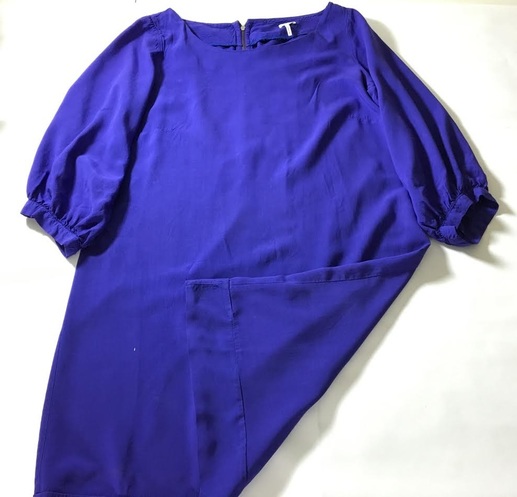
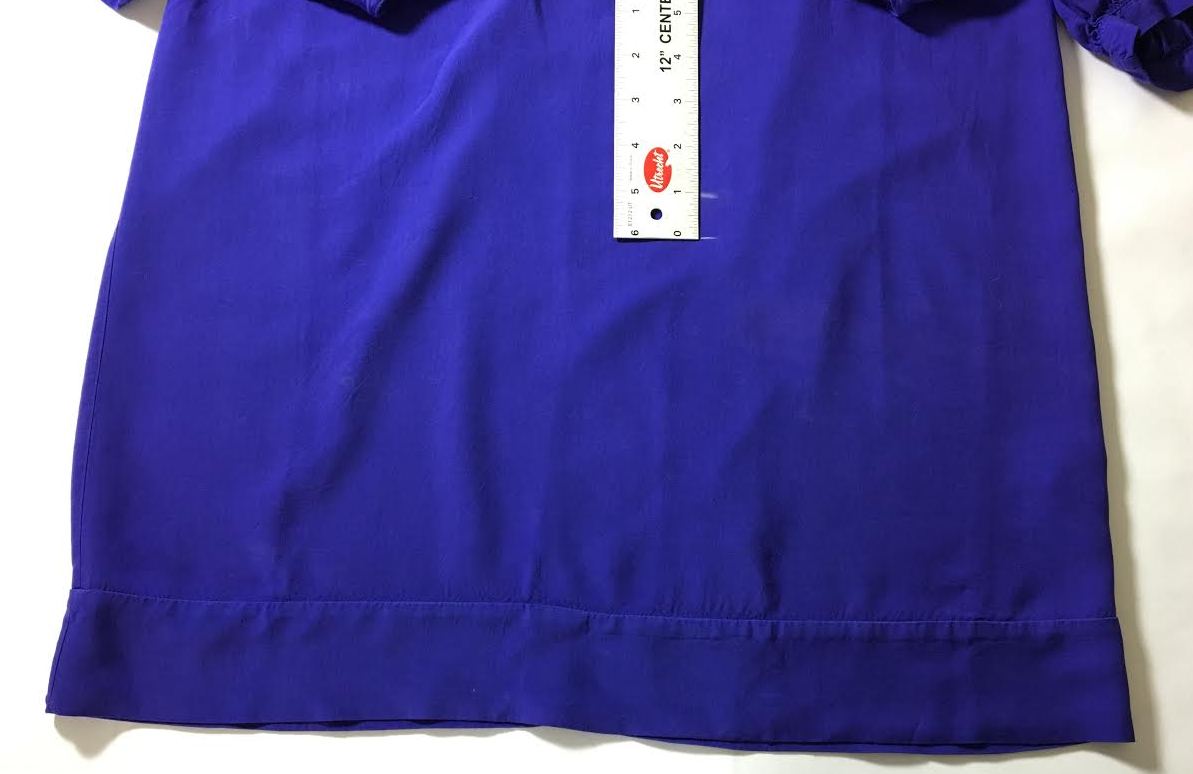

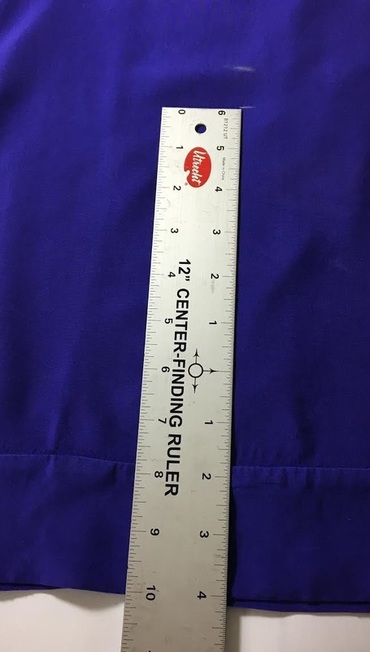


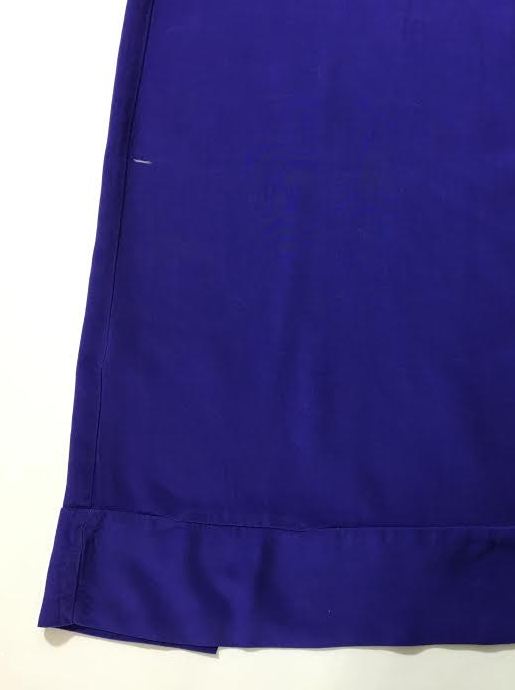





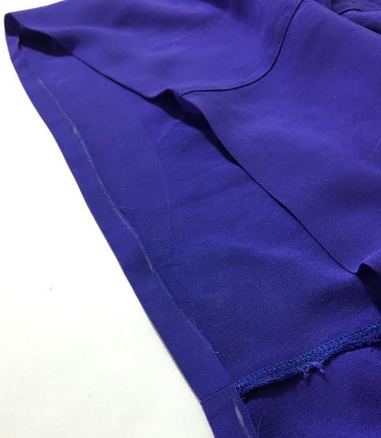






 RSS Feed
RSS Feed

